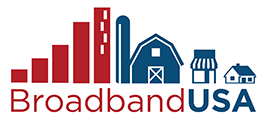Federal Funding
BroadbandUSA’s Federal Funding site connects you to funding opportunities that support broadband planning, digital inclusion, and deployment projects. The site allows you to filter programs by Agency/Department, Eligible Recipients, and/or Program Purpose by using the filter options on the left.
In November 2021, President Biden signed the Infrastructure Investment and Jobs Act into law and provided $65 billion for broadband. While these new funding opportunities are included in the federal funding website, additional information about the investment in high-speed internet can be found in the White House's Guidebook to the Bipartisan Infrastructure Law and on InternetForAll.gov. For information on state broadband programs and contact information for state-level broadband leaders please visit NTIA's state resources page.
This site is updated with information provided by federal agencies and the Federal Communications Commission as new funding becomes available. Information included in the Federal Funding site can be downloaded in PDF and spreadsheet formats as well as an Interactive Guide. Feedback on the site and its resources is always welcome. Please contact BroadbandUSA@ntia.doc.gov to provide input.
Please note: on mobile devices, filtering options may be found near the bottom of the page below the table of information.
Each year ARC provides funding for several hundred investments in the Appalachian Region, in areas such as business development, education and job training, infrastructure (including broadband), community development, and transportation. These projects create thousands of new jobs, improve local water and sewer systems, increase school readiness, assist local communities with strategic planning, and provide technical and managerial assistance to emerging businesses.
POWER is a congressionally-funded initiative that targets federal resources to help communities and regions that have been affected by job losses in coal mining, coal power plant operations, and coal-related supply chain industries due to the changing economics of America's energy production. Within the POWER Initiative, 1/3 of funding is specifically available for broadband-related projects.
The Community Infrastructure Fund was created to target physical infrastructure projects that help build safer, more resilient communities in the Delta region. The three areas of investment through this program target basic public infrastructure, transportation infrastructure, and flood control project centered around economic development.
States' Economic Development Assistance Program (SEDAP) is a competitive grant program designed to support economic development activities across the Mississippi River Delta and Alabama Black Belt regions. SEDAP addresses the DRA’s congressionally mandated four funding priorities: basic public infrastructure, transportation infrastructure, workforce development, and business development.
Technical assistance to access infrastructure or adoption funding.
BTA provides financial assistance through cooperative agreements to eligible entities to receive or deliver broadband technical assistance and training and supports the development and expansion of broadband cooperatives.
The Business and Industry program bolsters the availability of private credit by guaranteeing loans made by lenders to rural businesses. This program improves the economic health of rural communities by increasing access to business capital through loan guarantees that enable commercial lenders to provide affordable financing for businesses in eligible rural areas.
The Community Connect program helps fund broadband deployment in rural communities where it is not yet economically viable for private-sector providers to deliver service. The grants offer financial assistance to eligible service providers that will construct, improve, or expand broadband networks in rural areas.
This program provides affordable funding to develop essential community facilities in rural areas. An essential community facility is defined as a facility that provides an essential service to the local community for the orderly development of the community in a primarily rural area, and does not include private, commercial or business undertakings.
This program provides loan guarantees to eligible lenders to help build essential community facilities in rural areas. An essential community facility is defined as a facility that provides an essential service to the local community for the orderly development of the community in a primarily rural area, and does not include private, commercial or business undertakings.

